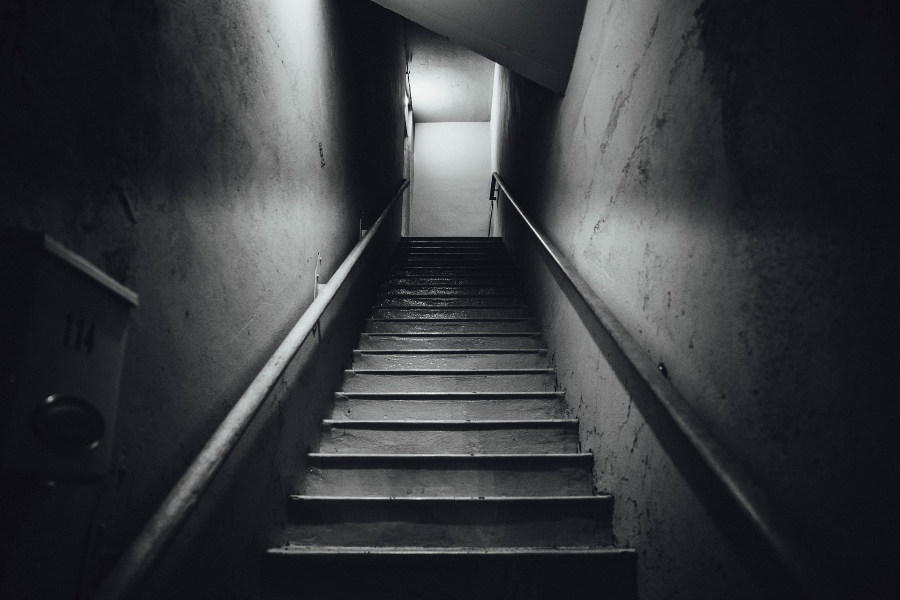
Falling down the stairs can result in serious injuries, such as brain, back, and neck injuries. These severe injuries often require expensive long-term medical treatment. Victims of slip and fall accidents or staircase accidents are often left with high medical bills, change to their quality of life, and overall mental anguish.
Each year falls account for 8 million visits to the emergency room. Falls are also the leading cause of visits to hospitals and emergency rooms at 21.3%.
The risk of fatality associated with a fall increases with age. This means that the elderly are at the highest risk for severe injuries and death associated with falls. This is why, while it’s important everywhere, staircase design is especially important inside nursing homes, to prevent these accidents from occurring.
If you or someone you love has been involved in a slip and fall accident as a result of a dangerous staircase, you can file a lawsuit against the at-fault party to receive compensation for your damages.
Can you recover compensation for being injured in a fall down stairs?
Yes, you can recover compensation for a fall down the stairs, if your fall was caused by another person’s negligence. In this case, you file a lawsuit against the at-fault party to recover both economic and non-economic damages, including:
- Medical bills
- Lost wages
- Loss of earning capacity
- Loss of consortium (in wrongful death cases)
- Permanent disability, disfigurement, or scarring
- Pain and suffering
How to Prove Liability in a Dangerous Staircase Lawsuit
Proving liability is the first step in any personal injury accident, as it determines who you’ll be filing your lawsuit against and why. When you fall on the stairs, the liable party is most often the person who owns the building. This person was responsible for approving any staircase designs, and they’re responsible for making sure the staircases are properly maintained at all times.
To prove that someone was negligent in causing your case, meaning that an accident occurred because of something that they did (or didn’t do), you’ll have to prove the following:
- A condition on the property that they owe posed a threat to the safety of the inhabitants or visitors.
- The owner of the property was either aware or reasonably should have been aware that this hazard existed.
- The property owner was negligent for not repairing the hazard or preventing the staircase from being used.
- Because of their negligence, you were involved in an accident that caused injury or injuries.
- The leading cause of your injury or injuries was the property owner’s negligence.
Common Staircase Hazards
Accidents that occur on staircases occur because of poor staircase design or hazards that result from poor maintenance or build quality. Here are some of the most common staircase hazards.
Broken or Missing Handrails
Staircase codes in Minnesota require handrails. If handrails aren’t installed or are broken, this could cause an accident to occur. The disabled and the elderly often require handrails to ensure their safety when using stairs. When they aren’t present, it can pose a huge risk to their safety.
Poor Lighting
Not only is poor lighting dangerous, as people won’t be able to see where they’re walking or stepping, but poor lighting also increases the risk of an accident occurring because of other hazards. For example, poor lighting is dangerous, but it’s even more dangerous when there aren’t any handrails present, or if there’s a spill.
Spills
A spill by a customer or employee in a business can still be considered a hazard, just like a spill because of a maintenance issue can be. The property owner or corporation can be held responsible for these issues, even if the accident occurred because an employee forgot to clean up the spill.
Uneven Stairs
Stairs that are uneven or crooked can cause a person to miss their step, resulting in them tripping forward or falling backward.
Snow and Ice
Failure to properly clear stairs of snow and ice in the wintertime can make someone liable for an accident that occurs on their steps. Property owners are responsible for clearing their own steps. As long as they’re aware that the hazard is present, they can be considered liable.
Torn Carpet
Torn carpets on staircases can cause people to trip, resulting in serious injury. Carpets naturally degrade over time. So it’s important that property owners are keeping an eye on the carpets to ensure that they’re being maintained.
No Markings on Stairs
In some circumstances, staircases require markings to ensure that they’re safe. Whether these are tread markings or markings for when a staircase is around a corner or hidden, it’s the responsibility of the property owner to make sure that people are aware of any hazards by marking them properly.
Violation of Code
In Minnesota, staircase code shows how stairs should be built. This includes riser height, staircase length, the requirement of handrails, and much more. If this staircase code (or building code) isn’t followed, they could be liable for any accidents that occur.
How an Attorney Can Help After the Slip and Fall Accident
If you or someone you love has been injured in a slip and fall accident on a staircase, please contact our talented team of attorneys here at Sand Law. We have years of experience working on slip and fall cases. And we’ll be able to get you the compensation that you deserve for your injuries.
We will determine liability, file your lawsuit, investigate the scene of the accident, and more, leaving you to rest and recover for your injuries while we work on getting you the highest settlement possible.
For more information or a free case evaluation, please contact us online or at 651-291-7263.

